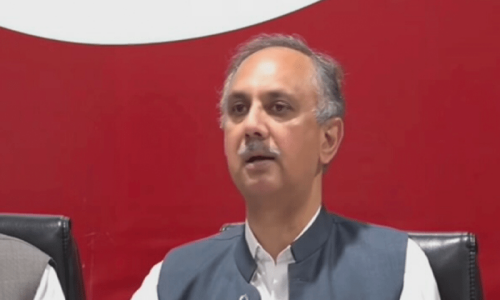KARACHI: The issues and their repercussions of the city’s planning on the environment and society were the focus of a talk organised by Irtiqa Institute of Social Sciences at their office on Saturday.
Researcher and teacher Mansoor Raza delivered a talk based on a paper by well-known architect and town planner Arif Hasan. He said that the trends in shaping the city included migration and the tremendous urban sprawl seen here was mostly through three corridors of Karachi — the Superhighway, Hub River Road and National Highway. Meanwhile the diversification within the city happened through vertical growth.
“As the city was not as big as it has grown to be now, the katchi abadis earlier used to come up near work centres,” said Raza. “But they are now coming up around the city’s outskirts, leading to serious repercussions, including social, financial and human resource issues.”
‘Neighbourhoods too started consolidating on ethnic and sectarian lines’
It was explained how to be accepted as a part of the global economy some former mayors of Karachi coined phrases for the city such as ‘world-class city’, ‘investment-friendly city’, etc, while also changing the master plan paradigm of Karachi.
Master plan
“Earlier, the city’s master plan would be developed by government institutions such as the KDA, but then even its name was changed to ‘Karachi Strategic Development Plan 2020’ from master plan. Thus they were giving the city a strategic direction but no master plan,” said Raza, adding that it meant that they were offering flexibility for the private sector.
So in a way, the city’s governing systems became subservient to market forces meaning that they would serve those with purchasing power and those who didn’t possess that power would be marginalised.
“The first generation katchi abadis and their struggles were not the same then. Earlier, they were after basic necessities of life but the second generation katchi abadis needed comfort also. Thus there was a vertical growth as expanding families needed more space,” he said. “Neighbourhoods too started consolidating on ethnic and sectarian lines,” he added.
“How the development plans were implemented was insensitive to the ecological requirements of the city because the basic thing for the authorities was to make the most and earn maximum profit from the city land,” Raza said.
Coming to the migrants of the city, he reminded of the three biggest ones — as a result of the partition in 1947, in the fall of Dhaka in 1971 and then in 1978 in the form of the Afghan refugees with several social, political and environmental repercussions. An informal sector to cater to the housing needs of all these people then came about. Civil facilities and services came under pressure. “Karachi has grown 60 times to what it was in 1947,” he said.
There was also a lot of encroachment too where the qabza mafia also became active. Then as property in the city became more expensive and katchi abadis started getting regularised with time, the poor people living there decided to sell or rent out their living quarters to move towards the outskirts. This added another problem — transportation.
Transport problem
Commuting took time and the public transport system was also not really catering to the needs of the masses. Thus many bought motorcycles, which added to the traffic congestion. Even though there were more women working now the buses still offer a one-third sitting space for them as men take up two-thirds of the room. Qinqis are a cheap solution, but they also are a traffic nuisance. Besides, women don’t like to use them. “For 47 per cent of the city’s population, transport has become a deciding factor in the kind of jobs they get,” he said.
It was also explained how the recent anti-encroachment drive in Karachi had not just displaced vendors, but also inconvenienced people who needed to travel more now for grocery shopping. “Commuters also need to buy groceries on their way home after work. All over the world there are vendor markets near bus and train stations,” he said.
Moving the discussion forward, Dr Noman Ahmed, chairman of the department of architecture and planning at NED University, said there was another master plan also under development these days. “It is the master plan of Gwadar,” he said. But explaining how disconnected and out of sync the planners were from the requirements there, he said the discussions and planning for Gwadar took place in Islamabad. “Seeing land as the greatest asset there, they talk about who should get how much land. They don’t talk about the overall economic structure of that city or how livelihoods will be generated there and how the indigenous people there would benefit from the progress,” he said.
Earlier, Kaleem Durrani of Irtiqa Institute of Social Sciences briefed the audience on the subject.
Published in Dawn, January 28th, 2019













































